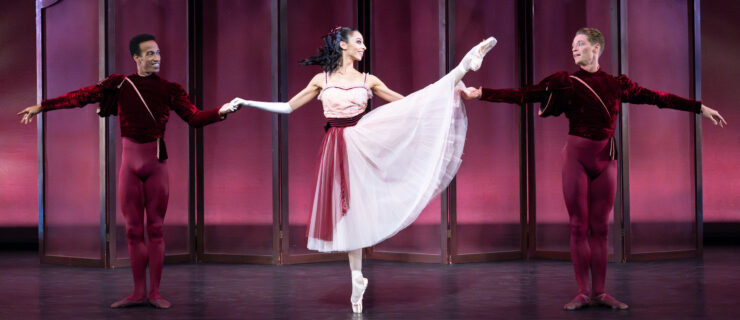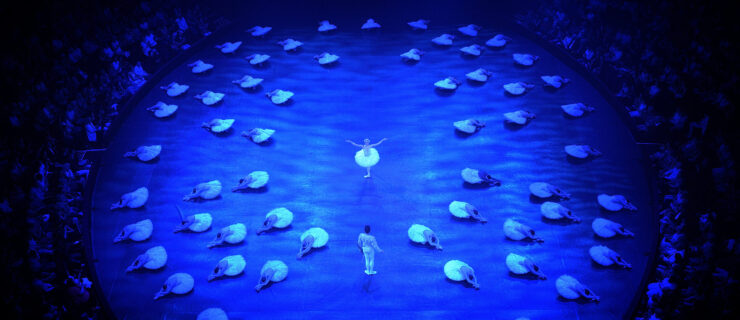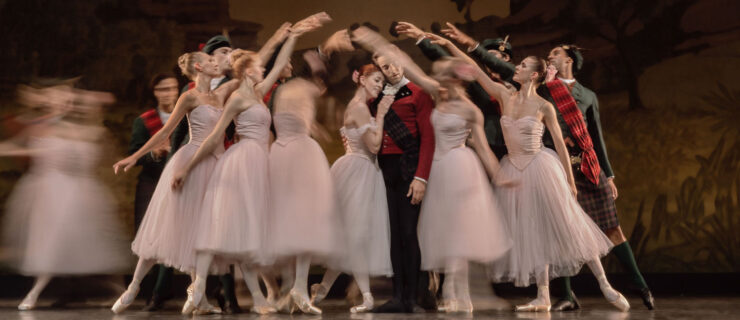Never-Ending Summer
The summer after I turned 16, I saw my dancing take a leap forward. I had reconnected with my very first Russian ballet teacher, Inna Stabrova, at an intensive, and she’d worked closely with me on my coordination, one of the weakest parts of my technique. When it was time to return home, I was bursting with improved awareness and new knowledge. But I was worried: What if I lost all the things I’d worked so hard to master over the summer?
Returning from a summer program is like coming home after a voyage of self-discovery. During the intensive, you strike out on your own to gain strength as well as deeper understanding of your instrument and your craft. New instructors
provide fresh feedback. Corrections you’ve heard before finally click because they come from a different perspective. But if you’re going to permanently integrate these improvements into your technique, you’ll need to synthesize your summer training with your year-round work. So how can you hold onto the discoveries you’ve just made?
Jump, Then Jot
Yes, it’s summer, but don’t give up the pen and paper. One of the most effective methods of retaining information from class and rehearsal is simply writing it down. Professional dancers record the notes given to them by directors and ballet masters, so it’s a good idea to get into the habit as a student.
Right after grand allégro is finished, jot down every correction you can remember. If you’re a particularly visual person, try drawing diagrams or crafting helpful images, like “Hug a tree” for first position port de bras. Don’t stop there! Often, inspiring anecdotes that teachers tell about their own training and how they got results, or their experiences as performers, are also worth noting.
Take time to review your notes later—not only will it help you internalize your corrections, you’ll also be able to see patterns in your dancing and become more aware of what you need to work on. Use your notebook as a record you can refer back to throughout the year to prioritize your goals. Some dancers even like to post particularly helpful corrections on a wall somewhere in their bedroom so they can think about them on an ongoing basis.
Rock Out To…Corrections?
If you can’t bring yourself to write down notes, consider making audio recordings with your iPod, iPhone or another voice recorder. You can play them back to yourself during short breaks between classes. (Plus, putting both earbuds in and pulling yourself off to the side can send signals to friends that you need to work; sometimes an open notebook doesn’t provide the same kind of privacy.) You can also listen just before going to bed. Some studies say memory retention is aided by sleeping after learning, but since you can’t take a siesta after every correction-filled class, consider listening to your recording again at night.
Meeting Of The Minds
After you return home, set up a time to meet with your instructor. Let him or her know what you learned and ask for help in addressing the new corrections you received, or even the familiar ones that you’re used to getting throughout the year. (“My teachers over the summer also noticed that I tuck my pelvis. Having heard this from you before, I really want to tackle this challenge this year. What are some ways you think I can approach this problem?”) The two of you can work together to set goals for the upcoming year.
By collaborating with your year-round instructor, you’ll demonstrate an active interest in your training, and show them how their help and knowledge is important to you. Plus, you can take this opportunity to clarify any stylistic differences you might have found confusing over the summer. If, for instance, you were exposed to the Balanchine orientation of hips and shoulders in croisé devant after always having been taught the Vaganova way of doing it, you may want to discuss the subtle differences with your instructor. That way, you can better understand the position from both perspectives, and you can practice what your instructor prefers while still remembering the other style for the future.
Retain Any New Approach
If you studied a different style this summer, consider purchasing the DVD of your summer classes or performances. It’s more than just a family keepsake: a DVD can be a tool to help you review what you learned and see what you looked like dancing with Balanchine attack, for instance. And browse through YouTube, dancemedia.com and other video archives for footage of dancers and companies who perform in this style. Lastly, look into whether master classes in that technique are offered in your area during the year, so that you can practice any stylistic differences and keep them in your
muscle memory.
Go The Extra Mile
Take time in an empty studio to work by yourself on what you feel were your most important summer corrections. The only way to ingrain information in your muscle memory is to actively—and regularly—work on it. Practicing outside of class will let you move at your own pace, spending extra time on the things that require the most focus. It also allows you to bypass the necessary distractions of class, such as having to be aware of other dancers’ space or giving full attention to what the instructor is focusing on.
Whatever tools you use to help retain your summer learning, remember to recognize your successes along the way. You’ll build the endurance to keep going, because the process of retaining and applying your corrections from the summer will be just that: a process.
Gwynedd Vetter-Drusch is a former Pointe intern.





